Acacia wood is a popular choice for furniture and home decor due to its durability, unique grain patterns, and warm tones. However, without proper care and maintenance, acacia wood can easily become damaged or worn out over time. One of the most important steps in preserving acacia wood is sealing it.
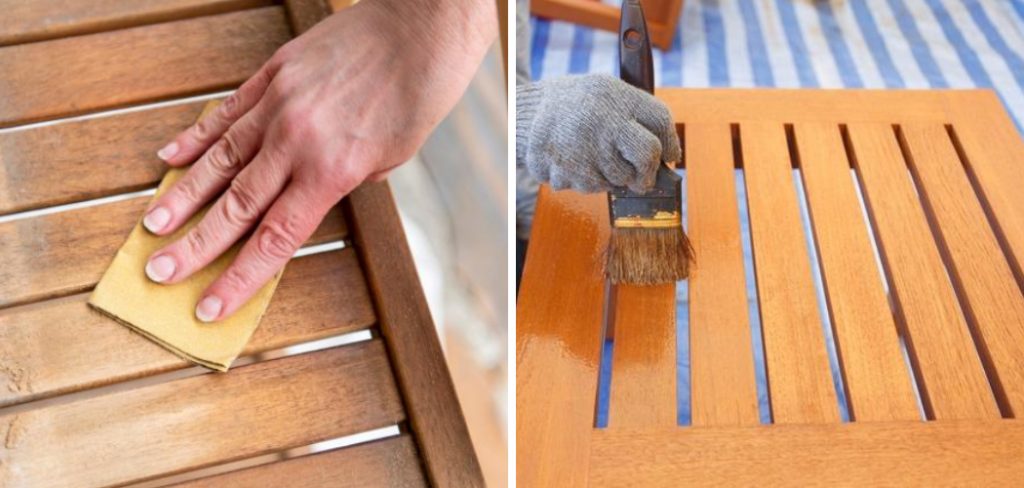
Sealing not only protects the surface of the wood from spills and scratches, but it also enhances the natural beauty and prolongs the lifespan of your acacia wood furniture. This guide will discuss why sealing acacia wood is important, what materials you need, and how to seal acacia wood properly. If you want to keep your acacia wood looking new for years to come, read on!
Why Seal Acacia Wood?
Acacia wood, like any other type of wood, is susceptible to moisture damage. If left untreated, water and other liquids can penetrate the surface of the wood, causing it to warp, crack, or rot. Additionally, exposure to sunlight and air can cause acacia wood to fade and lose its natural color over time.
Sealing acacia wood forms a protective barrier on the surface, preventing moisture from seeping in. It also helps to prevent UV damage and preserve the wood’s natural color and grain patterns. Furthermore, sealing can make your acacia wood furniture more stain-resistant and easier to clean.
Understanding Acacia Wood
Before we dive into the sealing process, it’s important to understand the different types of acacia wood and their characteristics. Acacia wood comes from several species of trees found in tropical and subtropical regions worldwide.
The two main types of acacia used for furniture are African acacia (also known as blackwood) and Asian acacia (also known as monkey pod). African acacia is generally darker and more durable, while Asian acacia is lighter and can be easily damaged.
Regardless of the type, acacia wood is known for its high density and durability, making it resistant to scratches and dents. It also has a unique grain pattern that adds character and warmth to any piece of furniture.
Tools and Materials You Will Need to Seal Acacia Wood
- Sandpaper (150-grit and 220-grit)
- Tack cloth or microfiber cloth
- Wood cleaner or mild soap
- Soft-bristled brush
- Mineral spirits or denatured alcohol
- Wood sealer (polyurethane or Danish oil)
- Paintbrush or foam brush
- Clean cloth for application
Step-by-step Guidelines on How to Seal Acacia Wood
Step 1: Prepare the Surface of the Wood
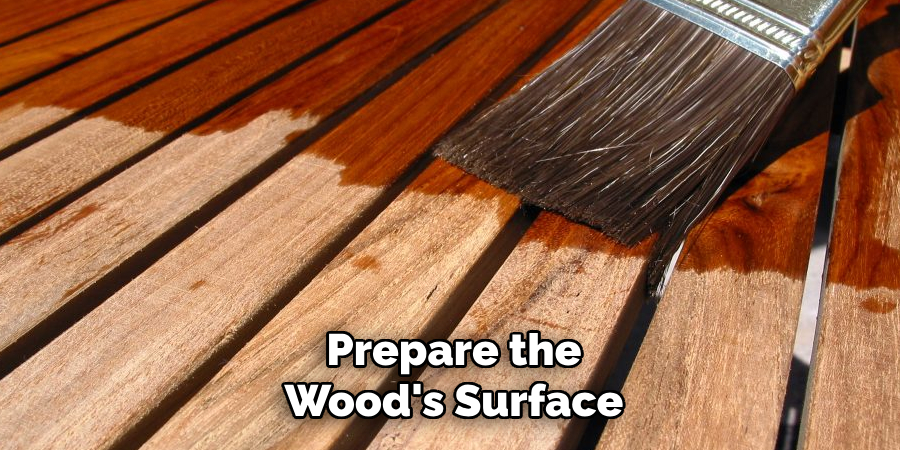
Before sealing, it’s essential to prepare the wood’s surface. Start by sanding the wood with 150-grit sandpaper in the direction of the grain. This will smooth out any imperfections and open up the wood’s pores. Then, use 220-grit sandpaper to create a finer surface. Preparing the wood will ensure that the sealer is absorbed evenly.
After sanding, use a tack cloth or a microfiber cloth to remove any dust or debris from the surface. It’s important to have a clean and smooth surface for optimum sealing results.
Step 2: Clean the Wood
Next, clean the wood using a mild soap or wood cleaner. You can also use a mixture of water and vinegar for a natural cleaning solution. Use a soft-bristled brush to gently scrub the wood’s surface, then wipe it down with a clean cloth.
While this step may seem unnecessary, it’s crucial in removing any residue or dirt that can affect the sealer’s absorption. If you’re working with old or heavily used acacia wood, you may need to use a stronger cleaner or lightly sand the surface again.
Step 3: Prepare the Sealer
Depending on the type of sealer you’re using (polyurethane or Danish oil), read and follow the manufacturer’s instructions for preparation. Some sealers may require thinning with mineral spirits or denatured alcohol, while others can be used as is. Preparing the sealer correctly will ensure proper application and optimal results.
Step 4: Apply the Sealer
Using a paintbrush or foam brush, apply a thin layer of sealer to the wood’s surface, following the direction of the grain. Work in small sections and avoid over-applying, as this can lead to uneven drying and potential issues with adhesion. Use a clean cloth to wipe off any excess sealer and blend the edges of each section.
Step 5: Allow Drying Time
Once you’ve applied the first coat, allow it to dry according to the manufacturer’s instructions. This typically takes around 2-4 hours, depending on the type of sealer used. If necessary, lightly sand the surface with 220-grit sandpaper before applying a second coat. Make sure to remove any dust or debris before proceeding.
Step 6: Apply Additional Coats
For maximum protection, applying two to three coats of sealer is recommended. Follow the same steps as above, allowing each coat to dry and lightly sanding in between if necessary. This will ensure a durable and long-lasting finish on your acacia wood furniture.
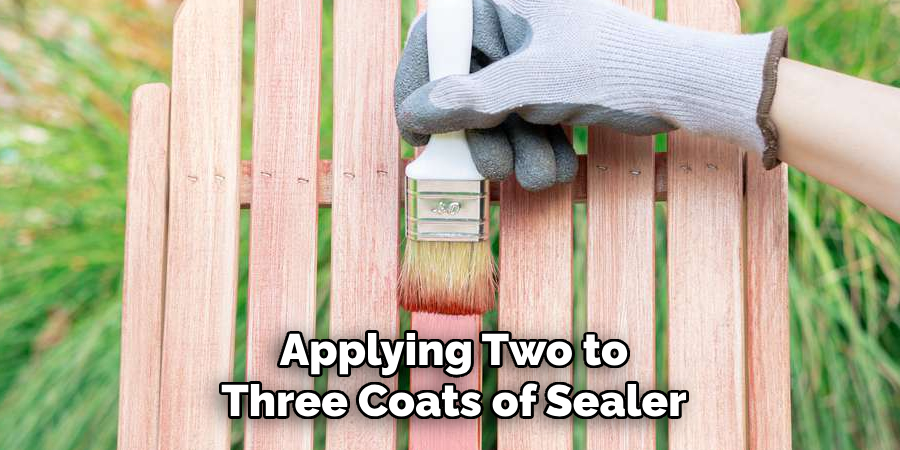
If you’re using Danish oil, you may need to apply additional coats every few months for ongoing maintenance and protection. Make sure to read the manufacturer’s instructions for specific recommendations.
Following these simple steps will help you properly seal your acacia wood furniture and keep it looking beautiful for years to come. Remember to regularly clean and maintain your furniture to ensure the sealer works effectively. With proper care, you can enjoy the warmth and durability of acacia wood in your home for decades. Happy sealing!
Additional Tips and Tricks to Seal Acacia Wood
1. If you plan on using your acacia wood items outdoors, it is important to regularly apply a sealant to protect them from weathering and outdoor elements. This will help prolong the wood’s lifespan and prevent it from becoming damaged or discolored.
2. Before applying any sealant, thoroughly clean and dry the wood’s surface. This will ensure that the sealant can properly penetrate and adhere to the wood.
3. When choosing a sealant, look for one specifically designed for use on acacia wood. This will ensure that it is compatible with the unique properties of the wood and provide the best protection.
4. Depending on your personal preference, you can choose between water-based or oil-based sealants. Water-based sealants are typically more environmentally friendly and have a lower odor, while oil-based sealants provide a richer and deeper finish.
5. For optimal protection, it is recommended that at least two coats of sealant be applied. Allow the first coat to fully dry before applying the second coat.
6. For best results, use a high-quality brush or roller to apply the sealant evenly over the surface of the wood. This will help prevent drips and uneven coverage.
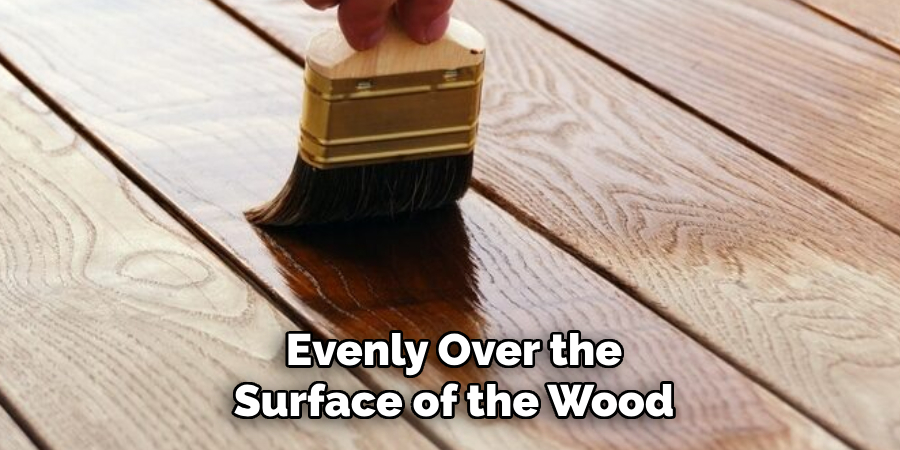
7. After each coat has dried, lightly sand them down with fine-grit sandpaper if you notice any bubbles or brush strokes in the sealant.
8. Once the sealant has fully dried, you can further enhance the shine and protection by buffing the surface with a soft cloth. This will also help remove any remaining residue or streaks.
9. Regular maintenance is key to keeping your acacia wood items looking their best. It is recommended to reapply a fresh coat of sealant every 1-2 years or as needed, depending on the wear and tear of the item.
10. When storing your acacia wood items, make sure to keep them in a cool, dry place. This will help prevent any moisture from causing damage to the wood.
11. If your acacia wood item does become scratched or damaged, you can use a wood filler or putty to fill in the imperfections before reapplying a sealant.
Following these additional tips and tricks will help ensure that your acacia wood items remain beautiful and well-protected for years to come. With proper care and maintenance, you can enjoy the unique beauty of this versatile wood in your home or outdoor space. So, make sure to follow these guidelines to keep your acacia wood looking its best! Happy sealing!
Things You Should Consider to Seal Acacia Wood
1. The sealant type is the first thing you should consider before sealing acacia wood. There are several options available, including oil-based, water-based, and polyurethane sealants. Each type has its pros and cons, so it’s important to research or consult a professional to determine which is best for your project.
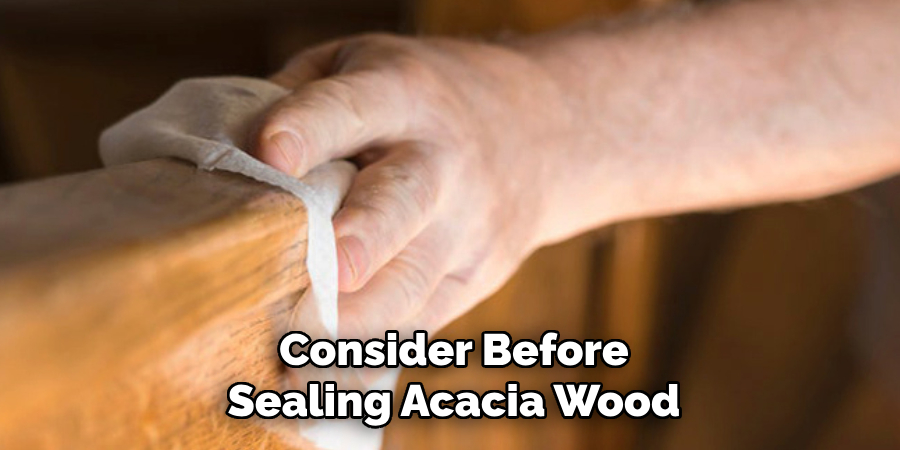
2. Another factor to consider is the condition of the wood. If your acacia wood is brand new and has yet to be exposed to any elements, then a simple sealant may be all you need. However, if the wood is weathered or aged, it may require more preparation before sealing.
3. It’s also important to check the wood’s moisture content before applying a sealant. If the wood is too wet, the sealant may not adhere properly and could lead to cracking or peeling over time. Use a moisture meter to determine if the wood is ready for sealing.
4. Before sealing, clean the wood thoroughly. This includes removing any dirt, debris, or old sealant that may be present on the surface. Sanding the wood may also be necessary to create a smooth and even surface for the sealant to adhere to.
5. When applying the sealant, follow the manufacturer’s instructions carefully. This may include using multiple coats, allowing for proper drying time between coats, and using specific tools or techniques for application.
6. It’s important to note that sealing acacia wood is not a one-time process. Over time, the sealant will wear off and need to be reapplied. The frequency of resealing will depend on factors such as exposure to elements and how often the wood is used.
7. Proper maintenance is also key in preserving the longevity of your sealed acacia wood. This may include regularly cleaning and dusting the surface, avoiding harsh chemicals or cleaners, and using protective coasters or mats for hot items.
8. Consider the overall aesthetic you want to achieve with your sealed acacia wood. Some sealants may alter the wood’s color or finish, so it’s important to test a small area first before applying them to the entire surface.
Following these considerations will ensure that your acacia wood is properly sealed and protected, allowing you to enjoy its natural beauty for years to come. Remember to periodically check the condition of the sealant and reapply it as needed to maintain its durability and appearance. Happy sealing!
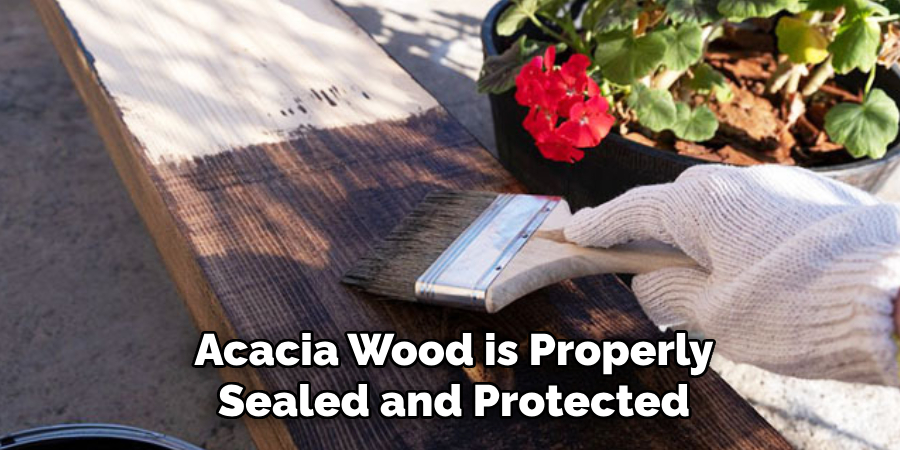
Maintenance Tips for Acacia Wood
1. Dust Regularly:
Dust and dirt can build up on the surface of your acacia wood furniture, causing scratches and damage over time. To prevent this, it is important to dust your furniture regularly with a soft cloth or feather duster. For hard-to-reach areas, use a small brush to remove any accumulated dust. This will help keep your furniture looking clean and polished. If you have any decorative carvings or details on your furniture, be sure to dust these areas carefully as well.
2. Avoid Direct Sunlight:
Acacia wood is a natural material and can be sensitive to UV rays from direct sunlight. Prolonged exposure to sunlight can cause the wood to fade and lose its natural color. To protect your furniture, it is best to avoid placing it in areas where it will receive direct sunlight. If this is not possible, consider using curtains or blinds to block out the sun’s rays.
3. Use Coasters and Trivets:
When placing drinks or hot dishes on your acacia wood furniture, be sure to use coasters and trivets. This will prevent any heat or moisture from damaging the surface of the wood. It is also important to wipe up any spills immediately to prevent them from seeping into the wood’s pores and causing staining or warping.
4. Refrain from Using Harsh Chemicals:
Harsh chemicals such as bleach or ammonia can damage the finish of your acacia wood furniture. It is best to use a mild soap or wood cleaner specifically made of natural wood. Avoid using abrasive cleaners or scrubbing too vigorously, as this can also cause damage to the surface of the wood.
5. Keep Away from Humidity:
Acacia wood is sensitive to changes in humidity and can expand or contract depending on the moisture levels in the air. To prevent warping or cracking, keeping your furniture in a well-ventilated area with moderate humidity levels is important. You can also use a dehumidifier in areas with high humidity to maintain the condition of your acacia wood furniture.
6. Regularly Oil and Seal:
To maintain the natural beauty and shine of your acacia wood furniture, it is recommended to oil and seal it every few months. This will help protect the wood from moisture and prevent it from drying out. Be sure to use a natural wood oil or wax specifically made for acacia wood furniture. This will also help enhance the wood’s natural color and grain.
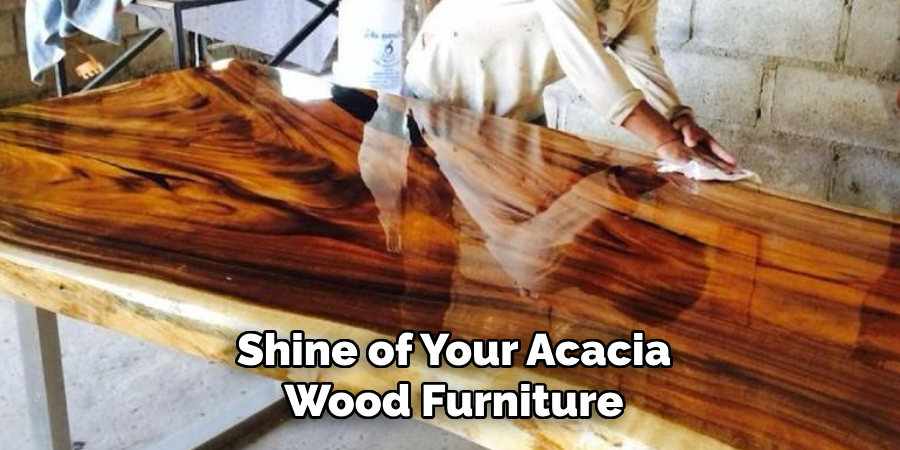
7. Handle with Care:
Acacia wood is a durable material, but it should still be handled carefully. Avoid dragging or sliding furniture across the floor, as this can cause scratches and damage to the furniture and your flooring. It is also important to lift and carry furniture properly, using your legs for support instead of solely relying on your back.
Following these maintenance tips will help keep your acacia wood furniture looking beautiful and in top condition for years to come. With proper care, your furniture will continue to add warmth and elegance to your home. So, it is important to follow these tips regularly.
Frequently Asked Questions
What is Acacia Wood Furniture?
Acacia wood furniture is made from the wood of acacia trees native to Australia and Africa. This type of wood is highly durable, water-resistant, and has a beautiful natural grain pattern. Acacia wood furniture is often used for outdoor furniture, but it can also be used for indoor furniture such as tables, chairs, and cabinets.
Why Do I Need to Seal Acacia Wood Furniture?
Acacia wood is known for its durability and water resistance, but it still requires sealing to protect it from the elements and extend its lifespan. Sealing helps to prevent the wood from cracking, warping, and becoming discolored due to exposure to moisture and UV rays.
What is the Best Sealant for Acacia Wood Furniture?
The best sealant for acacia wood furniture is one that provides protection against water, UV rays, and mildew growth. Some popular options include teak oil, tung oil, and marine-grade varnish. It is important to choose a sealant that is specifically designed for outdoor use and safe for use on wood.
How Often Should I Seal My Acacia Wood Furniture?
Sealing your acacia wood furniture frequently depends on how much it is exposed to the elements. If your furniture is used outdoors and exposed to rain, sun, and humidity, sealing it every 1-2 years is recommended. If your furniture is used indoors and not exposed to extreme conditions, sealing every 3-4 years should be sufficient.
How Do I Seal My Acacia Wood Furniture?
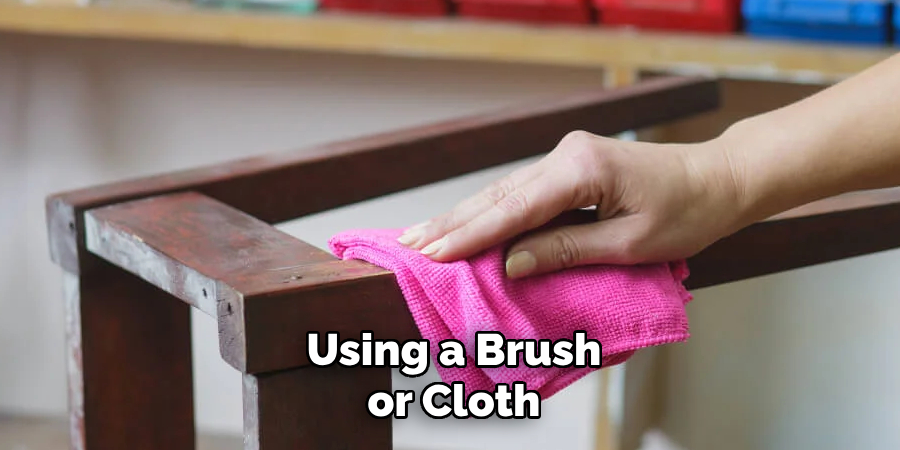
Before sealing your acacia wood furniture, ensure it is clean and dry. Sand any rough areas or imperfections on the surface, then apply a coat of your chosen sealant using a brush or cloth. Allow it to dry completely before applying a second coat if desired. Repeat this process every 1-2 years for optimal protection.
Conclusion
Now you know how to seal acacia wood and keep your furniture looking beautiful for years to come. Remember to choose a sealant designed for outdoor use and follow the manufacturer’s instructions.
Regularly sealing your acacia wood furniture will ensure it stays in top condition, even when exposed to harsh weather conditions. So sit back, relax, and enjoy your stunning acacia wood furniture! For more tips on caring for your wood furniture, check out our other articles on maintenance and preservation. Happy sealing!
About the Author
Adrian Green, a lifelong woodworking enthusiast, shares his passion for the craft through The Woodenify Blog. With a foundation built on years of hands-on experience in his father’s woodworking shop, Adrian is dedicated to helping others learn and grow in the world of DIY woodworking. His approach to woodworking combines creativity, practicality, and a deep appreciation for the art of building with your own hands. Through his blog, he inspires individuals of all skill levels to embark on their own woodworking journeys, creating beautiful, functional pieces of furniture and décor.
Professional Focus
- Specializes in DIY woodworking projects, from furniture to home décor.
- Provides step-by-step guides and practical tutorials for woodworkers of all skill levels.
- Dedicated to helping readers build confidence and skill through easy-to-follow instructions and tips.
- Passionate about fostering a community of makers who can share, learn, and grow together.
Education History
- University of Craft and Design – Bachelor of Fine Arts (BFA) in Woodworking and Furniture Design
- Woodworking Apprenticeships – Extensive hands-on training with skilled craftsmen to refine carpentry and furniture making techniques.
- Online Courses & Masterclasses – Continued education in advanced woodworking techniques, design principles, and specialized tools
Expertise:
- DIY woodworking, carpentry, furniture making, and home décor projects.
- Creating accessible tutorials and guides for beginner to advanced woodworkers.
- Sharing the joys and satisfaction of woodworking, from raw materials to finished products.
